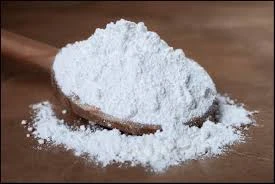
Understanding the Role and Applications of Emulsifier E471 in Food Products and Industry
Understanding E471 The Role of Permitted Emulsifier in Food Industry
Emulsifiers are substances that help to stabilize mixtures of oil and water, which would otherwise separate. Among the various emulsifiers used in the food industry, E471, also known as mono- and diglycerides of fatty acids, is one of the most prevalent. As food technology continues to evolve and demand increases for processed foods with longer shelf lives, understanding the role of E471 becomes increasingly important for both manufacturers and consumers.
What is E471?
E471 is derived from glycerol and fatty acids, which can either be sourced from animal fats or vegetable oils. This dual sourcing is a significant aspect of E471, as it aligns with various dietary preferences and regulations. The processing typically involves the reaction of glycerol with triglycerides, resulting in a homogeneous mixture that acts as an emulsifying agent. In the ingredient listings of food products, E471 can often be found alongside other emulsifiers and stabilizers, contributing to improved texture and consistency.
Applications in Food Products
E471 serves multiple purposes in the food industry. Primarily, it functions as an emulsifier, preventing the separation of oil and water in products such as margarine, dressings, and sauces. It creates a stable long-lasting emulsion, which is critical for products that require a creamy or viscous texture. Additionally, E471 acts as a lubricant, enhancing the mouthfeel of processed foods and improving their overall palatability.
Beyond its emulsifying properties, E471 also improves the shelf life of products by preventing phase separation and ensuring a homogenous blend of ingredients. This characteristic makes it valuable in baked goods, where it helps maintain moisture and freshness over time. E471 is commonly found in a wide range of food products, including bread, cakes, ice cream, and confectionery items.
permitted emulsifier e471

Safety and Regulatory Status
E471 is regarded as safe for consumption by several food safety authorities worldwide, including the Food and Drug Administration (FDA) in the United States and the European Food Safety Authority (EFSA). These organizations continually review scientific research and data to ensure that emulsifiers like E471 do not pose health risks to consumers. Nevertheless, it is essential to note that while E471 is generally considered safe, excessive consumption of processed foods containing emulsifiers may contribute to negative health outcomes.
Dietary Considerations
For vegans and vegetarians, E471 can be a point of contention since it can be derived from both plant and animal sources. Manufacturers are increasingly aware of this concern and often specify the source of E471 on product labels. Consumers should read labels closely to ensure that the emulsifiers used align with their dietary choices. Fortunately, with the rise in plant-based alternatives, many food companies now utilize vegetable-derived E471 to cater to these specific dietary needs.
Conclusion
E471, or mono- and diglycerides, plays a crucial role in the food industry by enhancing the texture, stability, and shelf life of various products. As a permitted emulsifier, it helps create a seamless blend of ingredients that consumers expect in ready-to-eat foods. While E471 is deemed safe by food safety authorities, awareness of dietary implications and sourcing is essential for consumers. As we move forward in a world of increasing dietary awareness, the transparency in food labeling continues to grow in importance, ensuring that individuals can make informed choices about the products they consume. Understanding additives like E471 empowers consumers to navigate the complexities of processed foods effectively.
-
Sodium Dichloroisocyanurate Safety Handling ProtocolsNewsJul.29,2025
-
Mining Chemicals for Copper Extraction Processes GuideNewsJul.29,2025
-
Fertilizer for Sale Shipping and Storage TipsNewsJul.29,2025
-
Dimethyl Disulfide as Sulfurizing AgentNewsJul.29,2025
-
Benzotriazole Safety Data Handling and Storage GuidelinesNewsJul.29,2025
-
Ammonium Bicarbonate Safety Handling Storage GuidelinesNewsJul.29,2025
-
The Transformative Role Of Trichloroisocyanuric Acid in Water TreatmentNewsJul.23,2025
Hebei Tenger Chemical Technology Co., Ltd. focuses on the chemical industry and is committed to the export service of chemical raw materials.
-

view more DiethanolisopropanolamineIn the ever-growing field of chemical solutions, diethanolisopropanolamine (DEIPA) stands out as a versatile and important compound. Due to its unique chemical structure and properties, DEIPA is of interest to various industries including construction, personal care, and agriculture. -

view more TriisopropanolamineTriisopropanolamine (TIPA) alkanol amine substance, is a kind of alcohol amine compound with amino and alcohol hydroxyl, and because of its molecules contains both amino and hydroxyl. -

view more Tetramethyl Thiuram DisulfideTetramethyl thiuram disulfide, also known as TMTD, is a white to light-yellow powder with a distinct sulfur-like odor. It is soluble in organic solvents such as benzene, acetone, and ethyl acetate, making it highly versatile for use in different formulations. TMTD is known for its excellent vulcanization acceleration properties, which makes it a key ingredient in the production of rubber products. Additionally, it acts as an effective fungicide and bactericide, making it valuable in agricultural applications. Its high purity and stability ensure consistent performance, making it a preferred choice for manufacturers across various industries.











